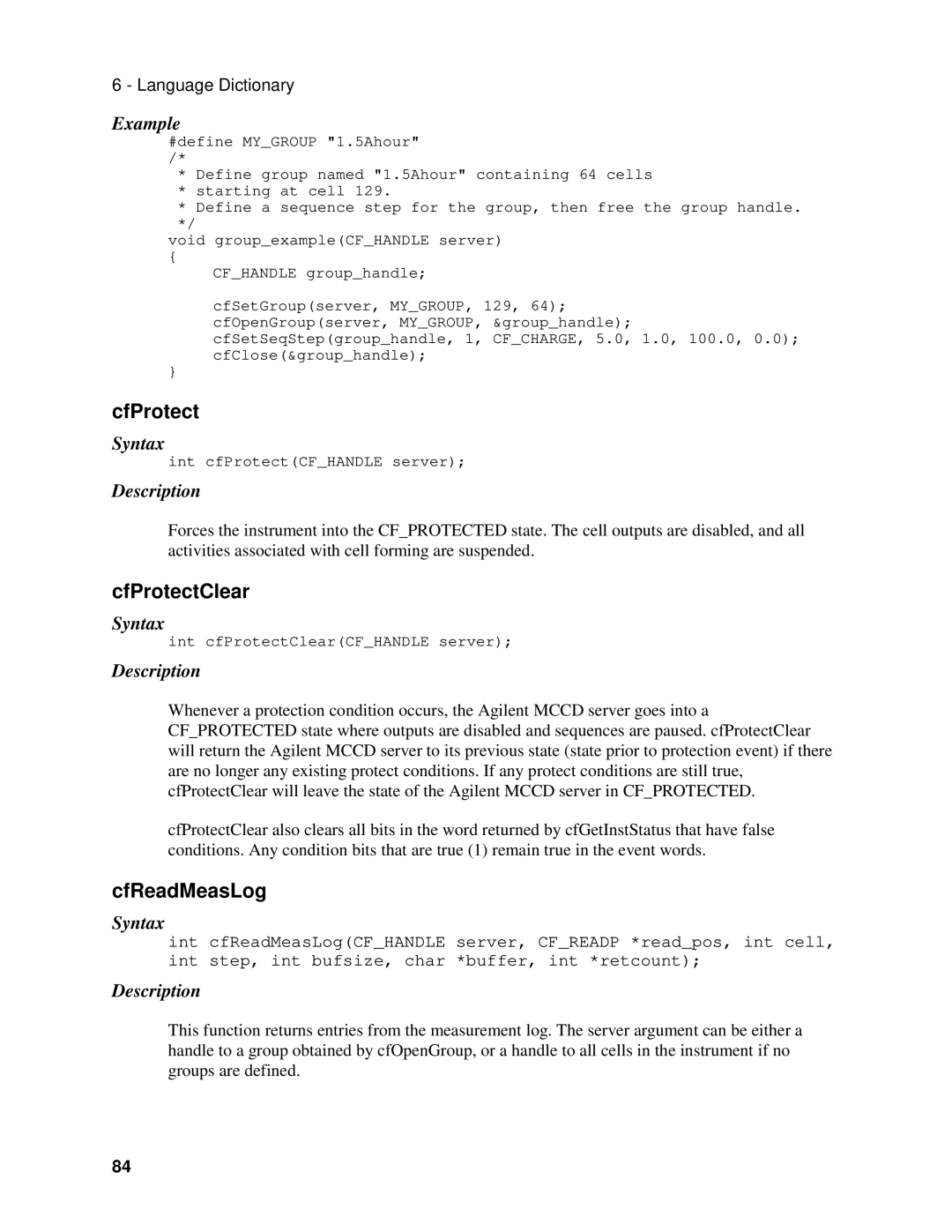6 - Language Dictionary
Example
#define MY_GROUP "1.5Ahour" /*
*Define group named "1.5Ahour" containing 64 cells
*starting at cell 129.
*Define a sequence step for the group, then free the group handle.
*/
void group_example(CF_HANDLE server)
{
CF_HANDLE group_handle;
cfSetGroup(server, MY_GROUP, 129, 64); cfOpenGroup(server, MY_GROUP, &group_handle); cfSetSeqStep(group_handle, 1, CF_CHARGE, 5.0, 1.0, 100.0, 0.0); cfClose(&group_handle);
}
cfProtect
Syntax
int cfProtect(CF_HANDLE server);
Description
Forces the instrument into the CF_PROTECTED state. The cell outputs are disabled, and all activities associated with cell forming are suspended.
cfProtectClear
Syntax
int cfProtectClear(CF_HANDLE server);
Description
Whenever a protection condition occurs, the Agilent MCCD server goes into a
CF_PROTECTED state where outputs are disabled and sequences are paused. cfProtectClear will return the Agilent MCCD server to its previous state (state prior to protection event) if there are no longer any existing protect conditions. If any protect conditions are still true, cfProtectClear will leave the state of the Agilent MCCD server in CF_PROTECTED.
cfProtectClear also clears all bits in the word returned by cfGetInstStatus that have false conditions. Any condition bits that are true (1) remain true in the event words.
cfReadMeasLog
Syntax
int cfReadMeasLog(CF_HANDLE server, CF_READP *read_pos, int cell, int step, int bufsize, char *buffer, int *retcount);
Description
This function returns entries from the measurement log. The server argument can be either a handle to a group obtained by cfOpenGroup, or a handle to all cells in the instrument if no groups are defined.
84
